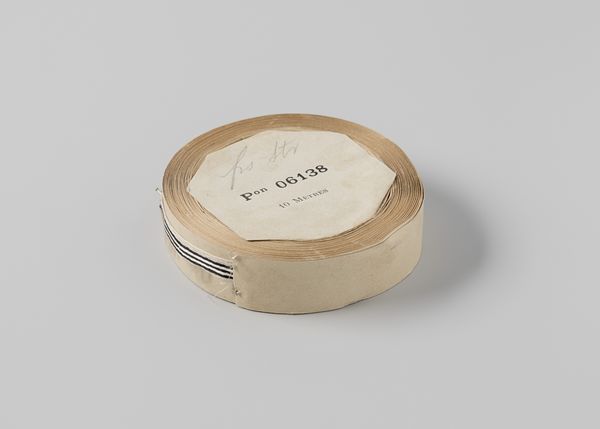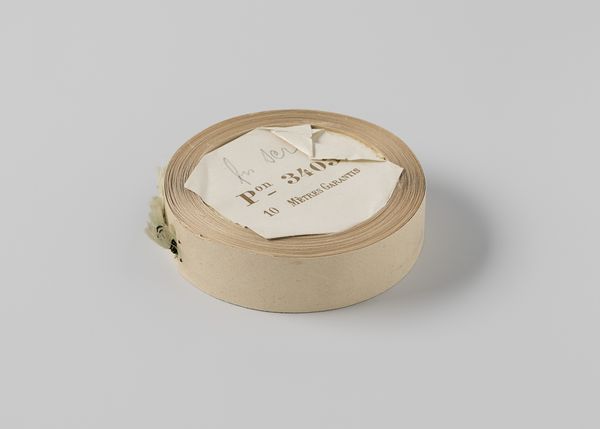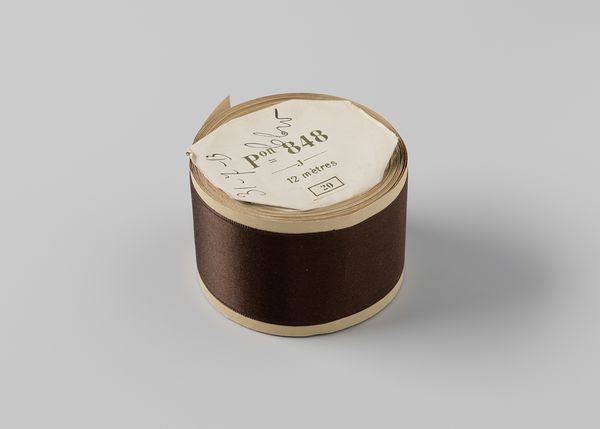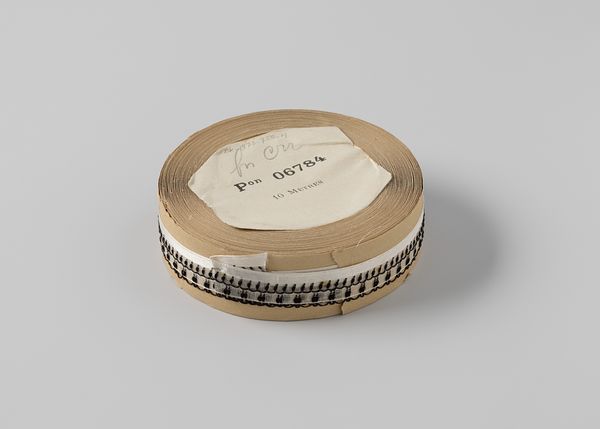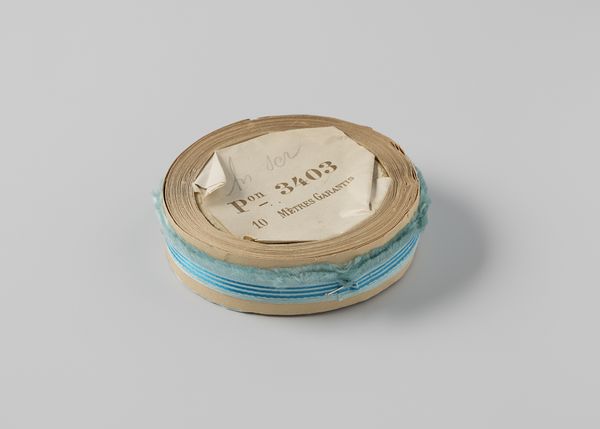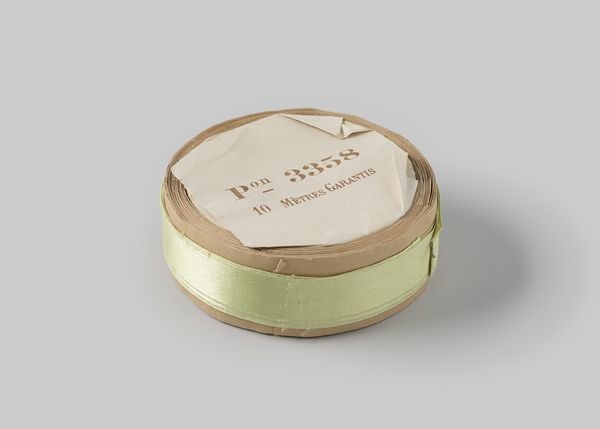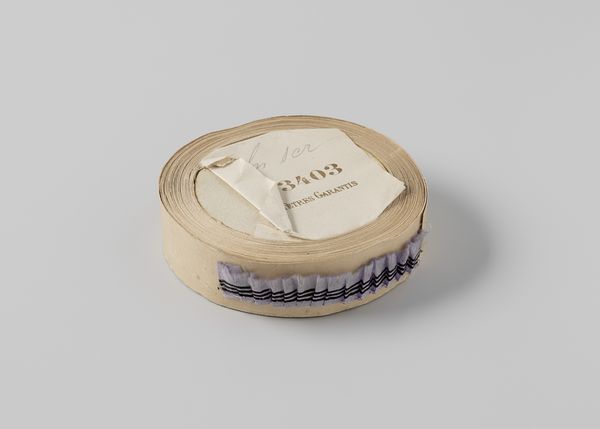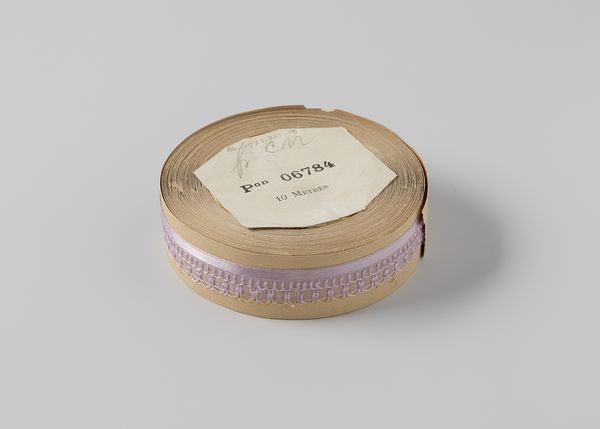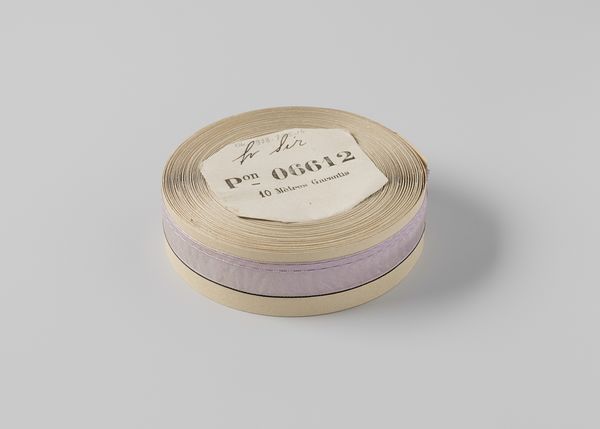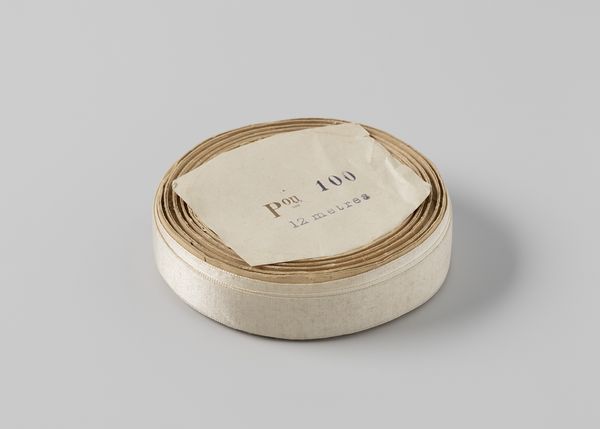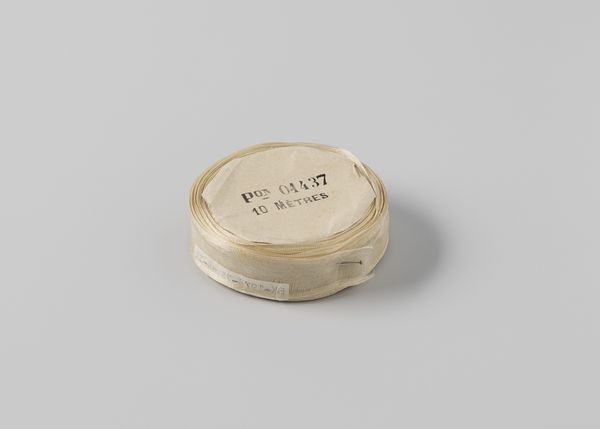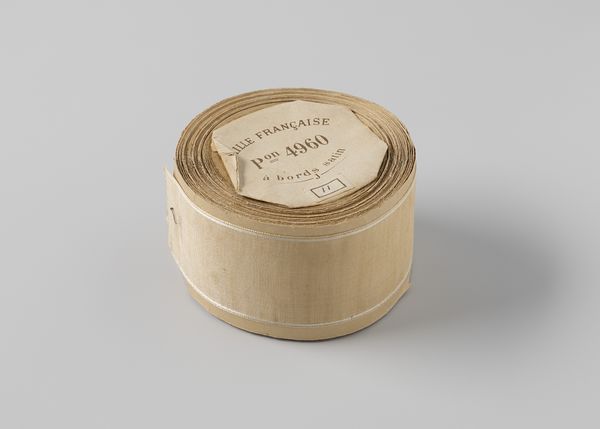
Rol met lichtgroen lint met één gerafelde zijde en drie zwarte horizontale strepen c. 1930
0:00
0:00
photography
#
photography
#
modernism
Dimensions: width 1.5 cm, height 2.3 cm, diameter 9.5 cm
Copyright: Rijks Museum: Open Domain
Curator: So unassuming, isn't it? We have here a photograph by Gustav Schnitzler, taken around 1930. It’s titled “Roll met lichtgroen lint met één gerafelde zijde en drie zwarte horizontale strepen,” which translates to “Roll of light green ribbon with one frayed edge and three black horizontal stripes.” Editor: My first impression is a sense of quiet industry. There's something subtly melancholic about such a mundane object rendered so carefully. It’s like a whisper of everyday life elevated. Curator: Schnitzler was a master of modernism, and you see that attention to form, to line. The three dark stripes against the barely-there green – it's almost architectural. Ribbon, though generally connotes frivolity, a very feminized symbol. Editor: I think situating this image historically deepens our reading of its purpose and impact. Early twentieth century photography was rapidly redefining visual culture. Images like these became ubiquitous as both art and advertisement. But think about women and industrial work—often tasked with monotonous production, while simultaneously their craft and domestic labor were belittled and devalued. Curator: Absolutely, and within that context, this roll becomes charged. The repeated coil—almost hypnotic—points to the ceaseless cycles of work, yes. Editor: And consider the symbolism of the label— "10 Metres Garantis", guaranteed reliability. What did such assurances mean for those producing this item? Were their livelihoods also "guaranteed"? It prompts reflection on the socioeconomic landscape where these images took on new life. Curator: These small details—the paper, the almost faded green— speak volumes, don't they? Schnitzler presents this commonplace object with stark simplicity and clarity, allowing us to see it afresh and to interpret all the nuances layered upon it. Editor: It makes me wonder about the life of this specific ribbon. How it might have once adorned a garment, sealed a package, or been discarded to waste, an unexamined piece of the past— until Schnitzler saw value within its mundane existence and lifted its symbolism out for re-examination.
Comments
No comments
Be the first to comment and join the conversation on the ultimate creative platform.
